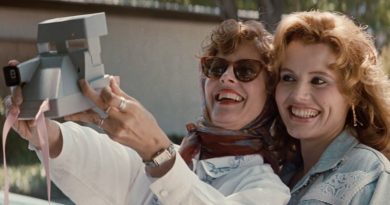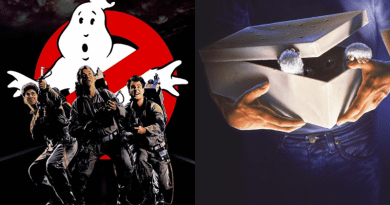Back to the Future Part III at 30: A Fitting Finale That Wraps Up The Trilogy
Here’s the thing about Back to the Future Part III — the third and final instalment of the beloved time-travel movie franchise didn’t get as much attention as the first two films. If that’s not enough, it even made less money with a worldwide box-office total at US$246.1 million — a far cry from the first two movies that raked higher between US$335 and US$389 million. While it was far from being labelled as a box-office fiasco (US$246.1 million against a US$40 million budget), it still hard to shake off the feeling that Back to the Future Part III ended up being the lowest-grossing film in the trilogy.
If you would ask most people who had seen the trilogy, don’t be surprised if they pick the first two films as among their favourites. The first Back to the Future in 1985 was the epitome of what a modern time-travel movie should be and a thrilling sci-fi adventure that remained as timeless as ever. The second film — released in 1989 — was a highly-ambitious sequel that took the first movie’s time-travel concept and expanded it further. Despite the increasingly-convoluted plot seen in the Back to the Future Part II, part of the sequel’s success lies on its high-concept premise beginning with the futuristic 2015 segment (everything from the hoverboard to the self-lacing Nike sneakers and auto-adjusting jacket has since become a pop-culture phenomenon even until today). Then, there’s the extended scene involving Marty McFly (Michael J. Fox) found himself stuck in the alternate, gritty 1985 timeline.
But Back to the Future Part III? Instead of concluding the trilogy with something more conceptually ambitious, returning director Robert Zemeckis and his co-creator Bob Gale opted for a more old-fashioned approach by incorporating the western genre into their time-travel film. Not to mention it did feel like a scaled-down Back to the Future movie that lacked the same creative heights and high-stake situations seen in the first two films. Perhaps those were some of the reasons why Back to the Future Part III ended up being the least talked-about film in the trilogy.
And yet, when I first watched Back to the Future Part III back in the 90s and kept revisiting the movie ever since, I’m actually glad that Zemeckis and Gale made the right decision settling down without digging deeper into the convoluted-storyline territory previously explored in the second film.
But their biggest creative risk of all has to be the introduction of a romantic angle between Christopher Lloyd’s Doc Emmett Brown and Mary Steenburgen’s Clara Clayton. This even helps expand Doc beyond the usual mad-scientist role who messes up everything with his invention of the time-travel machine (the DeLorean, that is) since the first film. Clara is the very reason that Doc has finally come to his senses. Or to put it bluntly, no matter how clichéd it sounds is that love conquers all.
And unlike the first two films focusing on Marty McFly’s (mis)adventures that saw him stuck from the past to the future, Zemeckis and Gale flip their storyline the other way around and made Doc the pivotal character this time around. This, in turn, gives Back to the Future Part III a refreshing change of pace since Marty McFly’s story arc is pretty much covered in the previous two films.
Here’s a recap of what happened in the third film: Marty travels back in time to 1885 in an effort to bring Doc back to the present day, following the letter he received from him at the end of Back to the Future Part II. But that is not all, as he subsequently learned about his death in the Old West as a result of Doc’s bitter rivalry with “Mad Dog” Tannen (Thomas F. Wilson). Of course, things do not go as planned after Marty finds out the DeLorean’s gas tank is leaking fuel and the fact that “there’s not going to be a gas station around [the Old West] until sometime in the next century”.
In order to get the DeLorean up and running at 88 miles per hour, their only solution is to hijack a train that passes by the Hill Valley town. While they are waiting for that to happen, Doc met Clara and falls in love with her at first sight after saving her from an out-of-control wagon.
Elsewhere, Marty tries to get used to the Old West surrounding and even named himself as “Clint Eastwood” — an obvious in-joke of the legendary actor’s name synonymous with the western genre.
Shot back-to-back with Back to the Future Part II and first released in the stateside back on May 25, 1990, the third movie gets a huge boost from its overall cast, notably the trio including Michael J. Fox, Christopher Lloyd and Mary Steenburgen. Thomas F. Wilson, in the meantime, does a great job portraying the big-bully antagonist as “Mad Dog” Tannen.
While both visual and narrative inventiveness that defined the first two films take a backseat this time around, Zemeckis manages to redeem himself with his overall effective direction. The depiction of the Old West may have been cloying and unabashedly sentimental but at the same time, it’s hard to deny its certain sense of time and place as well as the overall feel-good factor. He even has a field day mocking the genre itself and laying out the Clint Eastwood reference, notably Sergio Leone’s A Fistful of Dollars (the cast-iron plate used as a bulletproof vest during a standoff) and Once Upon a Time in the West (the establishing crane shot of Claudia Cardinale’s Jill’s arrival at the fictional Flagstone town but in this case, it was Marty entering the Hill Valley).
As mentioned earlier, the romantic angle between Christopher Lloyd’s Doc Emmett Brown and Mary Steenburgen’s Clara Clayton brings a much-needed heart and soul that diffuses enough warmth and genuine charm into the movie.
The last third-act is worth mentioning as well, complete with the climactic action-packed train sequence and a satisfying finale that ties up all the (necessary) loose ends. The kind of perfect ending that doesn’t justify the need for a fourth movie (even though there has been a neverending demand and rumours surfacing for years but thanks to the insistence of Robert Zemeckis and Bob Gale of keeping the franchise as it is, it’ll probably never happen).




